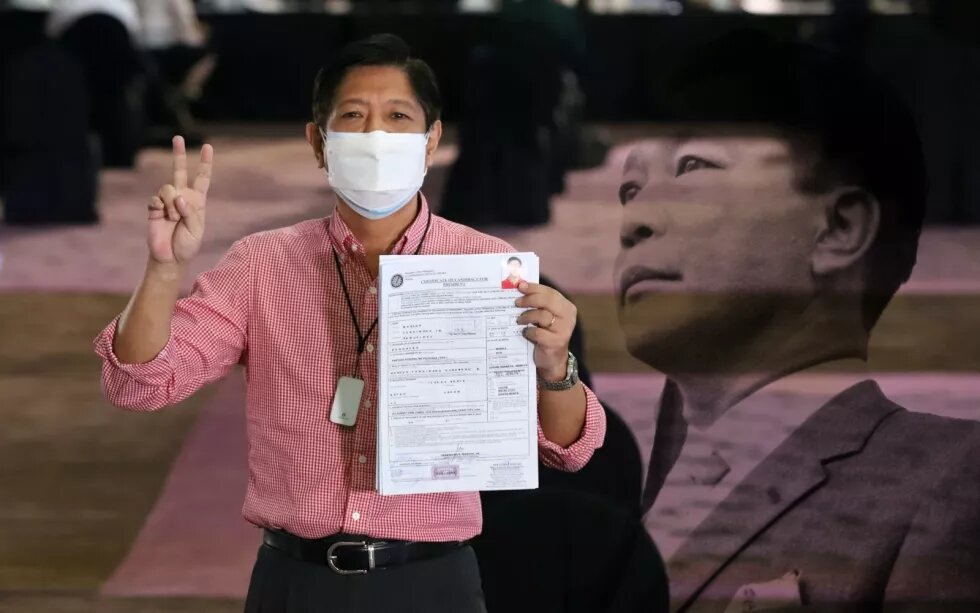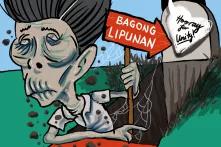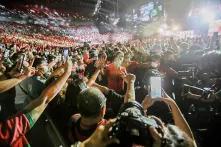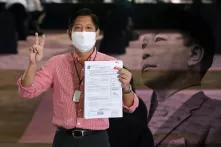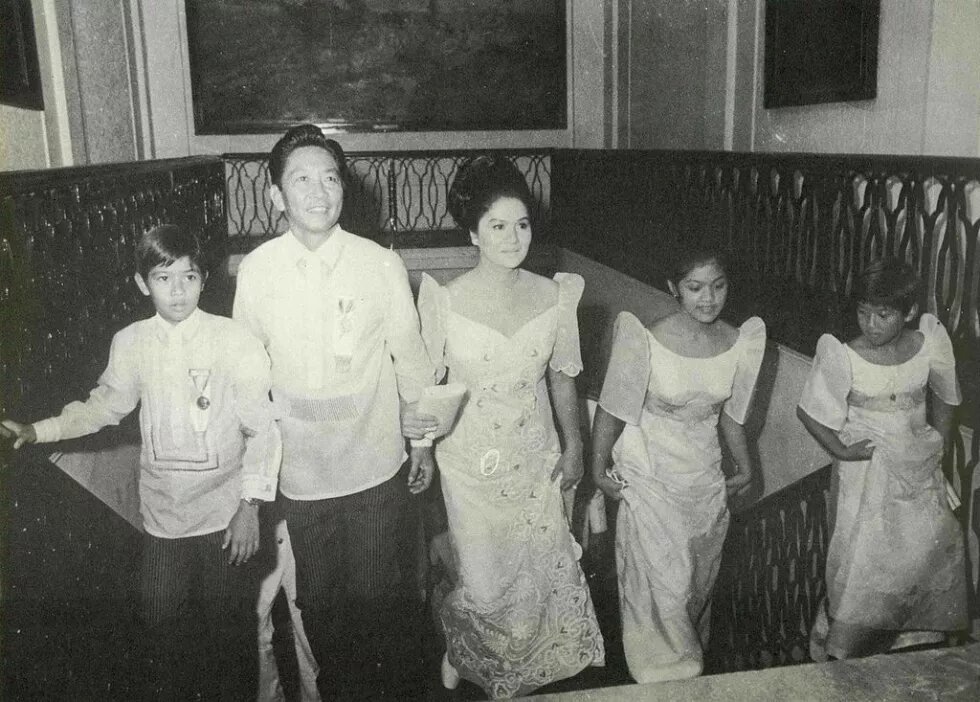
With the next generation from the Marcos and the Duterte families vying to lead the country in the Philippine’s upcoming election, what is it in the nation’s history and society that has allowed these abrasive and autocratic political dynasties to continue?
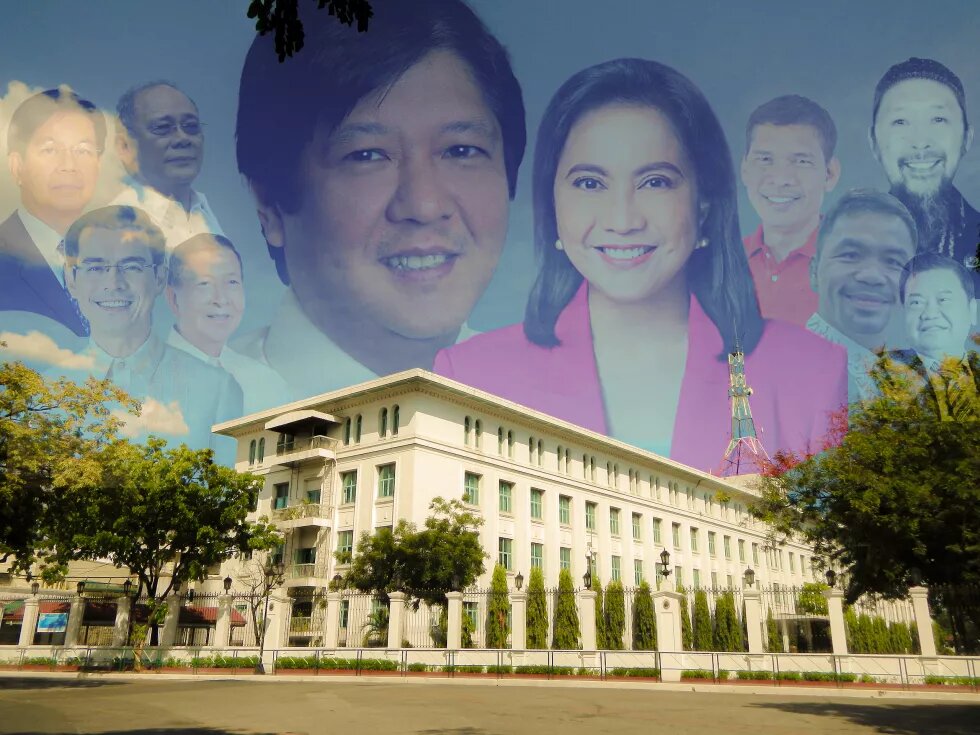
Ferdinand Marcos Sr. and his family occupied Malacañang, the presidential palace of the Philippines, for more than two decades. No matter how many prominent personalities deny it, make no mistake, the Marcos presidency was rife with human rights violations and corruption. Through the Human Rights Victims Reparation and Recognition Act (R.A. 10368) signed in 2013, the Philippine government has recognized and paid reparations to more than 11,000 victims of human rights violations during the Marcos regime. Funding for the reparations is sourced from the ill-gotten wealth of the Marcoses recovered by the government through rulings of the Swiss Federal Supreme Court and the Supreme Court of the Philippines.
In 2019, President Rodrigo Duterte signed the legislation that extended the validity and availability of the funds to be released to the victims of the Marcos regime. This came as a surprise since it was upon Duterte’s orders back in 2016 that allowed the burial of Marcos Sr. in the country’s Heroes’ Cemetery and maintained that there is no study or movie to prove the allegations of atrocities during the Marcos regime. Duterte himself is embroiled in an investigation by the International Criminal Court (ICC) for alleged crimes against humanity in the context of his campaign against illegal drugs. Duterte’s ‘war on drugs’ is said to have claimed between 8,000 and 30,000 lives since 2016.
If the latest poll survey is to be believed, Filipinos are ready to bring both Marcos’ and Duterte’s heirs to the two highest elected posts in the country. The current frontrunner in the presidential race is Ferdinand ‘Bongbong’ Marcos Jr., who is riding on the reputation and legacy of his father. His running mate for vice president is Duterte’s daughter, Sara Duterte-Carpio, who replaced him as Mayor of Davao City when he decided to seek the presidency in 2016.
In this article, I piece together the three key insights to explain what made it possible for the Marcos family to prospectively return to the presidential palace.
Deeply entrenched violence and an approving public
The rise of Sara Duterte-Carpio from city mayor to most favored prospect to replace her father as president is not only a reflection of the dynastic politics in the Philippines but an illustration of violence as an integral element in “how politics is contested, especially in the provinces of the country”. Even with the mounting deaths in the drug war, the ICC indictment and the profanity-laced public addresses, Rodrigo Duterte never lost the overwhelming approval of Filipinos. In September 2020, at a time when the Philippines posted the highest number of COVID-19 cases in Southeast Asia, overtaking Indonesia, Duterte received his highest approval rate at 91%.
During his presidential run in 2016, Duterte made no effort to hide his violent past as mayor of Davao City. During the campaign, Duterte pointed proudly to the hundreds of killings in the city and promised a drug war that would kill 100,000 if necessary. Before rising to national prominence, Duterte and his daughter had been switching places as either mayor or vice mayor in Davao. In 2011, during her stint as mayor, Sara herself was filmed in a display of violent outburst as she threw punches at a local sheriff who failed to carry out her orders.
The use of violence by sitting political elites to eliminate rivals and critics had always been part of modern Philippine politics, not only in the Dutertes’ Davao. Victims usually include political activists, human rights defenders and land reform activists, lawyers, prosecutors and judges, and political rivals. While targeted killing is a last resort in consolidating and maintaining power in their local fiefdoms, it is definitely one of the available options for conflict resolution and punishment resorted to by Philippine political and economic elites.
An investigation by German researcher Dr Peter Kreuzer reveals that attitudes of Filipinos towards use of violence may offer insight on why they continue to support Duterte and his violent ways. The World Values Survey (wave 7) reveals that, compared to its regional neighbors, Filipinos are extraordinarily willing to accept physical violence as a way to deal with problems or conflicts. Kreuzer suggests for Filipinos, violence is “understood as a fairly acceptable means of resolving conflict, achieving goals or punishing a wrongdoer”, whether they are drug users, political dissidents or staff members who ignore the mayor’s orders.
The younger Marcos and Duterte may be peddling the tune of unity in their campaign now, but both are definitely riding on the legacy of their fathers who ruled the country with violence and impunity. The approval of Filipinos to Duterte’s regime and their tolerance to the use of violence in general opened the way for the collusion of two political families associated with violent and autocratic rule.
Failure of Filipinos to remember
Following the ouster of Marcos Sr. in the EDSA People Power Revolution in 1986, the Presidential Commission on Good Government (PCGG) was established to recover the ill-gotten wealth accumulated by Marcos and his heirs. Ratified by supreme court rulings, the PCGG has since recovered over PHP 172 billion (approx. USD 3.3 billion) from the Marcoses. Yet the obscene amount amassed by the Marcoses – and the sheer number of human rights victims of his regime – would not remain in public memory for long.
This is the second point I make: the resurgence of the Marcoses is the result of the failure of the post-EDSA government to install mechanisms that compel the appropriate remembrance of the Marcos regime. The imposition of how exactly to remember the past through legislation and education is not an unusual proposition. Enforcing “state-approved interpretations of crucial historical events” has been done in Europe in relation to the Holocaust as a way to honor the victims but mainly to prevent “the promotion of ideologies deployed by violently repressive totalitarian governments”.
Judicial scholars, however, have argued that while no explicit legislation has been passed to outlaw the denial of Marcosian atrocities, there are already existing measures that serve this function including the 1987 Philippine Constitution which was designed to remember the evils brought about by the Marcos regime. Along with the passage of the law providing reparations to its victims, these enactments are considered symbols of the dominant narrative of good government and anti-authoritarianism in the post-Marcos era. Now, were these measures enough to prevent promotion of ‘Marcosian ideologies’ deployed by violently repressive totalitarian governments? Clearly not.
The Marcos machinery
When Marcos Sr. died in exile in Hawaii in 1989, his widow Imelda refused to bury him and had since insisted on burying him at the Libingan ng mga Bayani, the Philippines’ Heroes’ Cemetery. The Marcos family waited 27 years before Duterte was elected, who finally gave the go signal to allow the burial five months into his presidency. Duterte revealed that the eldest daughter of Marcos Sr, Imee, was among those who funded his presidential campaign.
Over the years, the Marcoses ensured that they never left the national consciousness as they sought local and national elected posts since their return from exile. Wife Imelda ran for president in 1992, the first elections held in the country since democratic exercises were dismantled by her husband through the martial law he declared in 1972. In 2019, at the age of 90, after holding congressional posts since 1998, Imelda retired from politics. Imee, for her part, held various elected posts in her father’s hometown before she ran and won a senate seat in 2019. Marcos Jr. followed the same political trajectory before he narrowly lost in the vice presidential race in 2016. In this year’s elections, it would seem that Marcos Jr is the heir that will bring back his clan to Malacañang.
The Marcoses were not only invested in keeping themselves in power through elected positions, they are also widely recognized to be behind the systematic campaign to glorify the Marcos image through “propaganda and targeted disinformation produced and amplified by an extensive network of websites, Facebook pages and groups, YouTube channels, and social media influencers”. A study on political campaigns premised on disinformation during the 2016 national elections reported that the Marcoses were beneficiaries of positive branding that paints over their family’s atrocious history in ways such as “sharing YouTube videos that tell a revisionist account of the 20-year Marcos regime as ‘the golden age of the Philippines’”. Brittany Kaiser, employee of now dissolved political consulting firm Cambridge Analytica, also claimed that Marcos Jr. commissioned the firm to do a rebranding of their family’s image through social media. Marcos’ camp denies these allegations.
The 2022 presidential election is undoubtedly the culmination of the three decades revisionist project of the Marcoses to bring themselves back to Malacañang. While it is easy to place all credit of the rebranding and rehabilitation of the Marcos legacy on their machinery, I echo the observation of historian Ambeth Ocampo, when he reflected on the Marcos regime: What was it that allowed human rights abuses during his period? Many Filipinos, myself including, are also asking a similar question: What made it possible for Marcos’ heirs, chiefly his son, to retake the presidential powers? For our tolerance to political violence, our failure to remember the past, and our complicity to their revisionist lies, we Filipinos paved the way for the Marcoses to return to Malacañang.
__
Gretchen Abuso teaches in the Department of Sociology and Anthropology at Xavier University in the Philippines. She is currently undertaking a PhD in sociology at the University of the Philippines Diliman. Her work deals with memory studies in the Philippine context. She may be contacted through mabuso@xu.edu.ph
The views expressed by the author are not necessarily those of Heinrich Böll Stiftung.


